You probably have a 5-gallon bucket handy; it's a convenient measuring and transporting device. The standard volume needed to complete most projects is expressed in cubic yards. We have researched the correlation between using a 5-gallon bucket to determine how many loads of soil, gravel, sand, or mulch it would take to fill 1 cubic yard (or a portion thereof).
There are 202 gallons in 1 cubic yard or 27 cubic feet. If you completely fill a 5-gallon bucket with soil, gravel, sand, or mulch, it would take about 40 1/2 loads to complete 1 cubic yard (202/5=40.4).
To simplify the computations, 1 cubic yard can be converted to 27 cubic feet. This measurement of volume would be used as the standard for the rest of the text. Read on and find ways to calculate the amount of material you need to complete specific projects and undertakings.
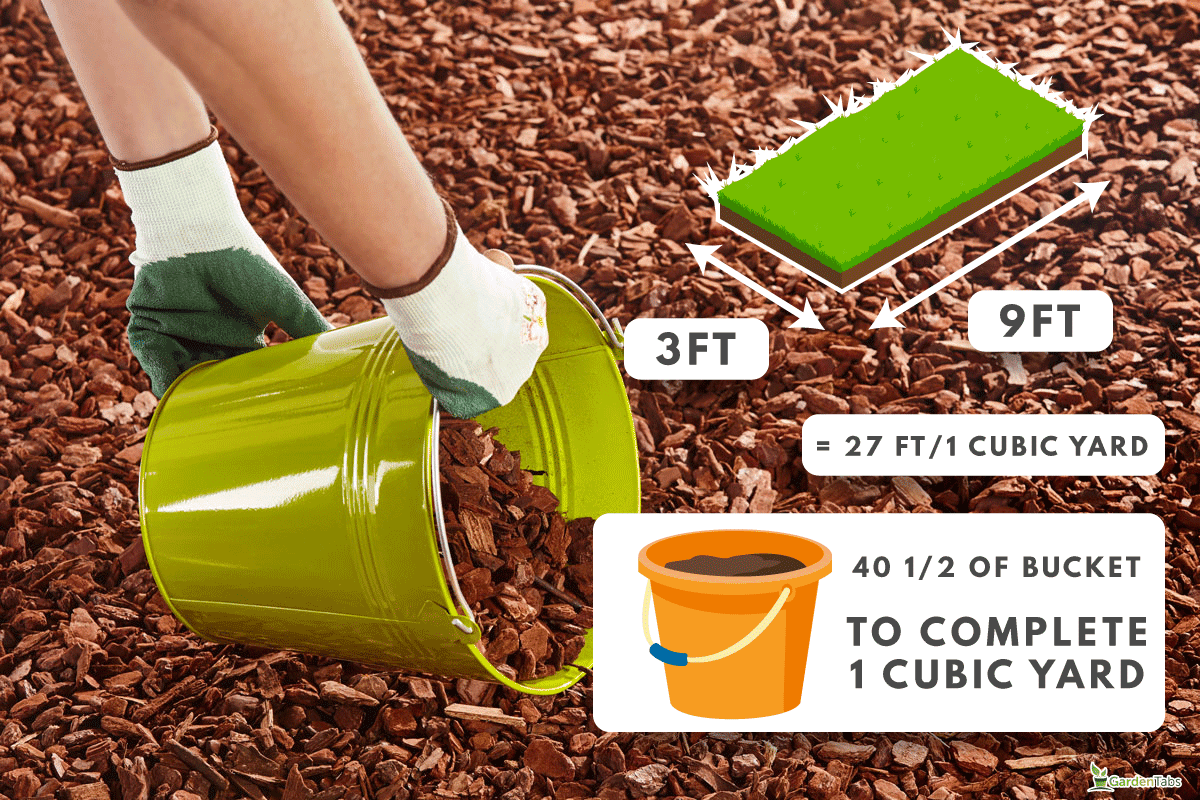
Important Conversions To Consider
Before we discuss the practical application of using a 5-gallon bucket to determine the amount of soil, gravel, sand, or mulch needed for various tasks, here are some conversions included in the article.
- One yard = 3 feet
- One cubic yard = 27 cubic feet
- One cubic yard = 202 gallons
- One cubic foot = 7.5 gallons
- One cubic yard or 27 cubic feet = 40.4 loads of material in a 5-gallon bucket

Check out United Solutions 5 Gallon Heavy Duty Bucket on Amazon.
It would be important to note that realistically, you would not fill a 5-gallon bucket to the brim when transporting materials. The weight of sand, gravel, and soil as well as the possibility of spilling, has to be considered.
- Weight of a 5-gallon bucket of soil = 55 pounds (1 gallon = 11 pounds)
- Weight of a 5-gallon bucket of gravel = 70 pounds (1 gallon = 14 pounds)
- Weight of a 5-gallon bucket of sand = 70 pounds dry (1 gallon = 14 pounds); 80 to 90 pounds wet (1 gallon = 16 to 18 pounds)
That being said, the actual bucket volume can be reduced to a more manageable 4-pound capacity. With this adjustment, there will be a variation in the number of loads necessary to fill 1 cubic yard or 27 cubic feet.
- One cubic yard or 27 cubic feet = 202 gallons
- Therefore our new computation would be: 202/4 = 50.5 bucket loads
It would take approximately 50 buckets to fill 1 cubic yard or 27 cubic feet
If you want to lessen the number of loads and consequent trips, you can simply fill the bucket with a little more material and adjust the capacity to 4.5 gallons.
- 202/4.5 = 44.88
With a 4.5-gallon capacity, it would take about 45 buckets
How To Determine The Amount Of Soil Needed For Specific Projects
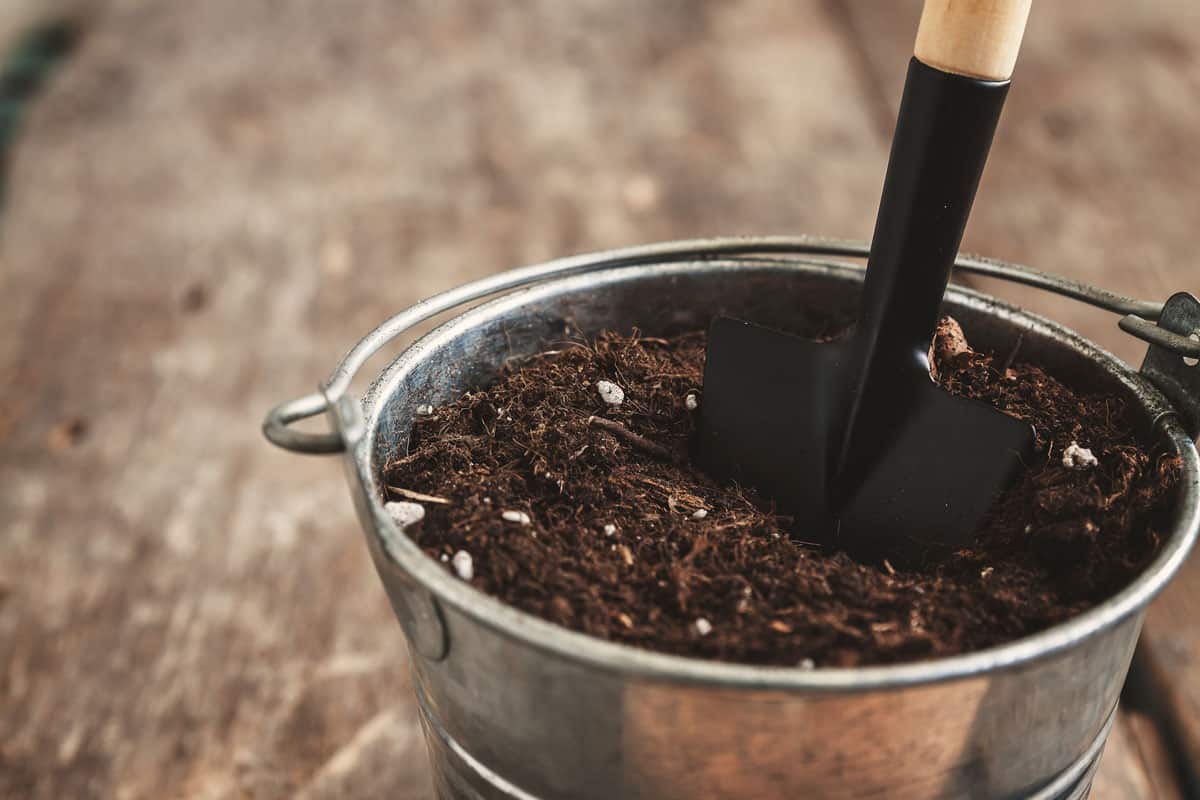
We have established that depending on your preferred capacity, it would take 45 to 50 bucket loads to fill 1 cubic yard or 27 cubic feet of soil. We have also determined that 1 cubic foot contains 7.5 gallons and the adjusted standard capacity of your bucket is 4 gallons.
The following section gives a few illustrations of the practical application of the above conversions and measurements.
Example 1: You need to fill a plant box measuring 10 feet long, 2 feet wide 2.5 feet high on its inner dimensions with soil:
- First, determine its volume by simply multiplying the dimensions:
- 10 feet x 2 feet x 2.5 feet = 50 cubic feet
- There are 7.5 gallons in 1 cubic foot, therefore: 50 cubic feet x 7.5 gallons/cubic feet = 375 gallons
- You need 375 gallons of soil to fill the plant box
- Divide the total by the capacity of the bucket (4 gallons being our standard):
- 375/4=93.75 means that you need approximately 94 loads of soil
- Since you won't fill the planter to the brim, it would be safe to assume that 90 buckets would be sufficient
Example 2: You have five 4-gallon pots, five 3-gallon pots, and ten 2-gallon pots that need filling:
- First, determine the total number of gallons needed
- 5 x 4 = 20 + 5 x 3 = 15 + 10 x 2 = 20 = 55 gallons
- Since you fill pots only around 3/4 or 75% of the way:
- 55 x 0.75 = 41.25 or you need 42 gallons of soil, therefore 42/4=10.5
- You need 10 1/2 buckets to fill the pots
How To Compute For Sand And Gravel Requirements
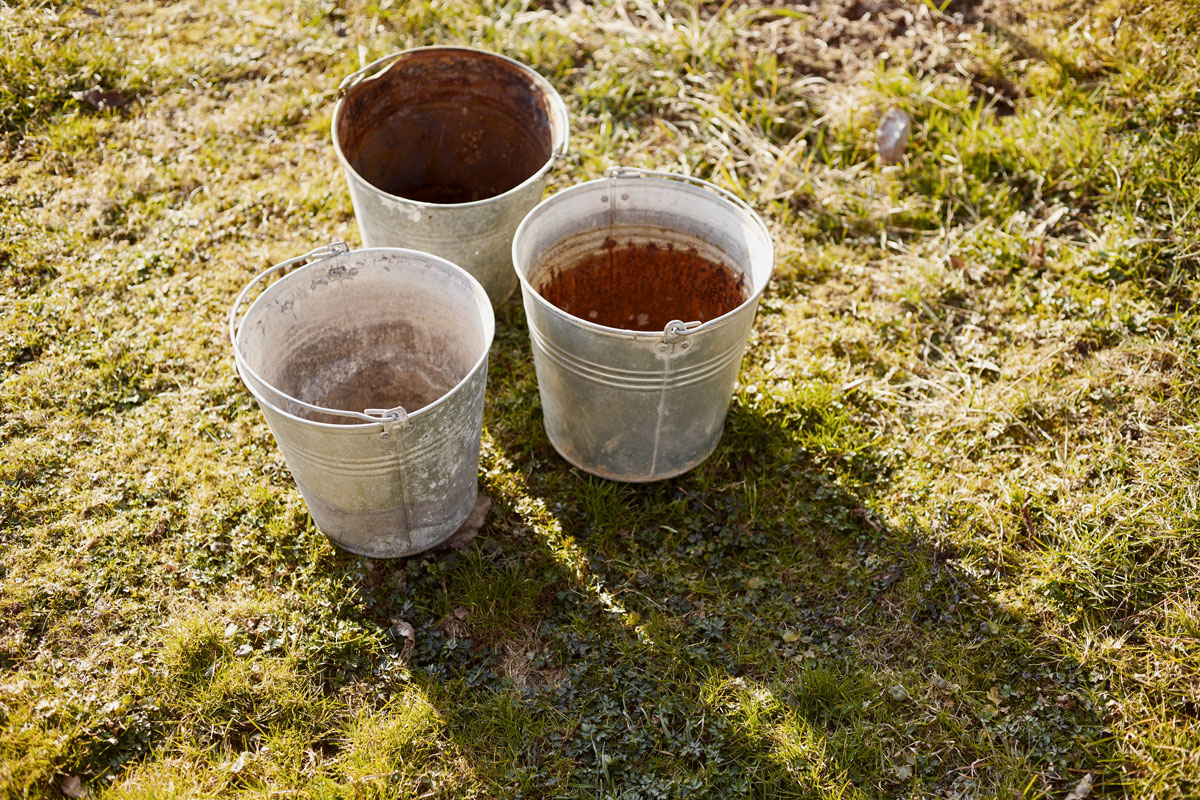
The same conversions apply to soil and gravel and would be the reference in the following illustrations: 1 cubic foot = 7.5 gallons and the bucket capacity is at 4 gallons.
Example 3: You need to fill a play sandbox with the following dimensions: 10 feet long, 8 feet wide, and 1.5 feet high:
- Again, determine its volume by multiplying the dimensions
- 10 feet x 8 feet x 1.5 feet = 120 cubic feet
- 120 cubic feet x 7.5 gallons/cuic feet = 900 gallons
- 900/4 = 225
- You need 225 buckets of sand to fill the box

Check out Premium 50 Pounds Play Sand on Amazon.
Sand and gravel measurements usually apply to preparing concrete. The succeeding illustrations incorporate their use as aggregates. But first, there are a few additional conversions to consider:
- The ratio of cement to sand to gravel in the preparation of concrete is 1:2:3
- The standard weight of a bag of cement is 110 pounds
- As established earlier, 1 gallon of dry sand or gravel both weigh 14 pounds
- Based on the ratio, a 110-pound bag of cement has to be combined with 220 pounds of sand and 330 pounds of gravel
- At 14 pounds a gallon, 220 pounds = 16 gallons of sand (220/14 = 15.71)
- At 14 pounds a gallon, 330 pounds = 24 gallons of gravel (330/14 = 23.57)

Check out Quikrete 50lb Coarse Sand on Amazon.
Example 4: You need to prepare concrete using just a bag of cement:
- You will need 16 gallons of sand
- 16 gallons = four loads of your 4-gallon bucket (16/4 = 4)
- You further need to add 24 gallons of gravel
- 24 gallons = six loads of your 4-gallon bucket (24/4 = 6)
- Therefore, it would take four loads of sand and six loads of gravel to combine with a single bag of cement
Example 5: How to prepare one cubic yard or 27 cubic feet of dry concrete:
You will need the following conversions to figure out how much sand and gravel is needed:
- A cubic yard or 27 cubic feet of dry concrete weighs 3,600 pounds
- Based on the ratio 1:2:3, cement accounts for approximately 15%, sand at 30%, and gravel at 55%
- 15% of 3,600 pounds = 540 pounds (3,600 x 0.15 = 540)
- 30% of 3,600 pounds = 1,080 pounds (3,600 x 0.30 = 1,080)
- 55% of 3,600 pounds = 1,980 pounds (3,600 x 0.55 = 1,980)
- Gravel and sand both weigh 14 pounds per gallon
- Your bucket has a readjusted capacity of 4 gallons per load
- Therefore, 1,080 pounds of sand = 77 gallons (1,080/14 = 77.14)
- You will need 19 bucket loads of sand (77/4 = 19.25)
- 1,980 pounds of gravel = 142 gallons of gravel (1,980/14 = 141.4)
- You will need 36 bucket loads of gravel (142/4 = 35.5)

Check out Lightweight Concrete Mix on Amazon.
How Much Mulch Do You Need For A Given Area
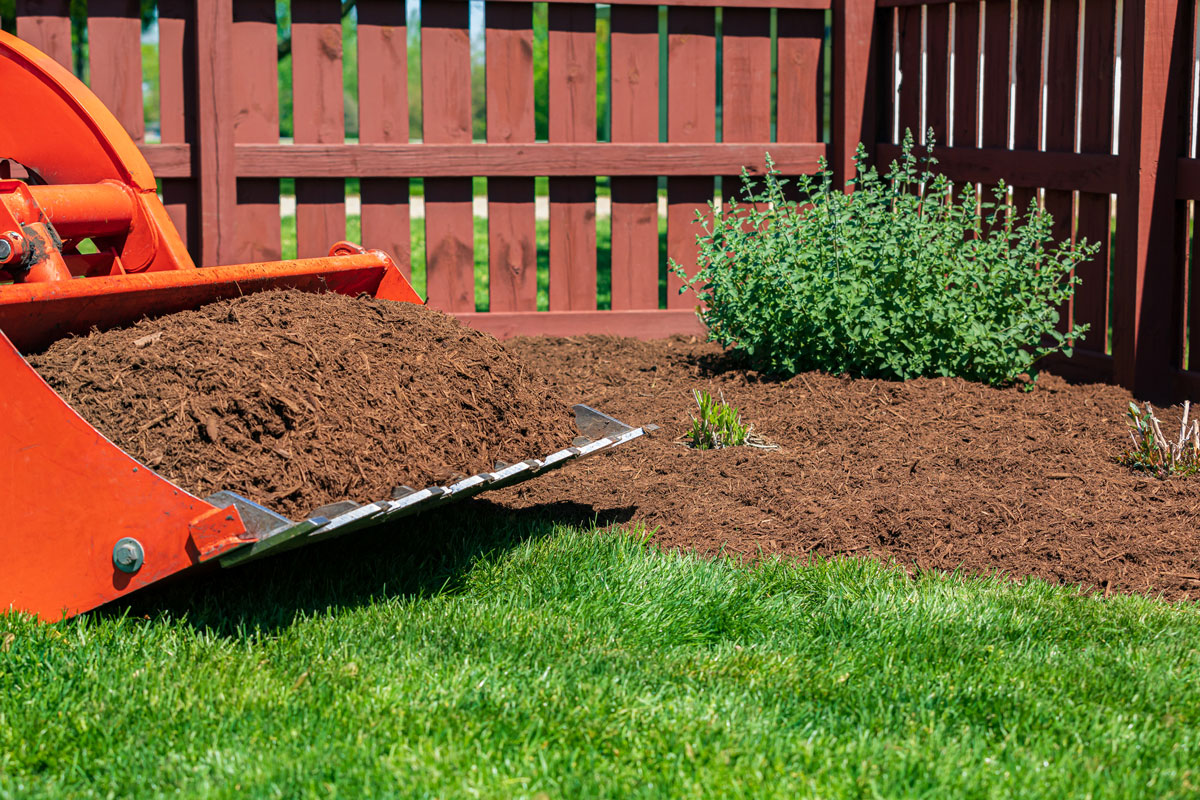
The computation for mulch is less exact and more varied since there are several materials applied to amend the soil. Inasmuch as our standard of 45 to 50 buckets would cover a cubic yard or 27 cubic feet of volume is close to accurate, the relative weight poses too many variables.
To simplify, mulch is usually sold in cubic yards or in bags that contain 2 cubic feet of the material. Either way, it would be advisable to know the general measurement of the area it has to be applied on.
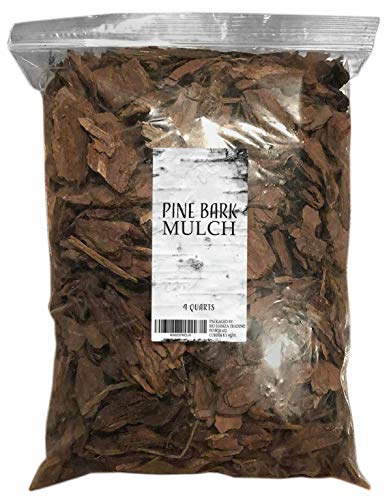
Check out Natural Pine Bark Mulch on Amazon.
Again, it would be more practical to set actual illustrations to appreciate the applications we have discussed so far.
How Much Mulch Do I Need For 100 Square Feet?
Example 6: You need to cover a hundred square feet (10 feet x 10 feet) of a garden with 3 inches of mulch thickness:
- The area has already been determined and you simply have to compute for its volume in terms of cubic feet
- Convert the thickness of the mulch into feet:
- 3 inches is 1/4 of a foot, so it is equal to 0.25 feet (1/4 = 0.25)
- Multiply it by the area, and you get the volume: 100 x 0.25 = 25 cubic feet
- You need to cover 25 cubic feet with mulch
- 25 cubic feet/4 (bucket capacity) = 6.25 loads
- You need six buckets of mulch to cover the area
Given the same area and specifications, how many bags of 2-cubic foot mulch do you need?
- 25 cubic foot/2 cubic foot bags = 12.5 bags
- You would need 12 1/2 bags of mulch
What Else Is A Five Gallon Bucket Useful For In Terms Of Measurement?
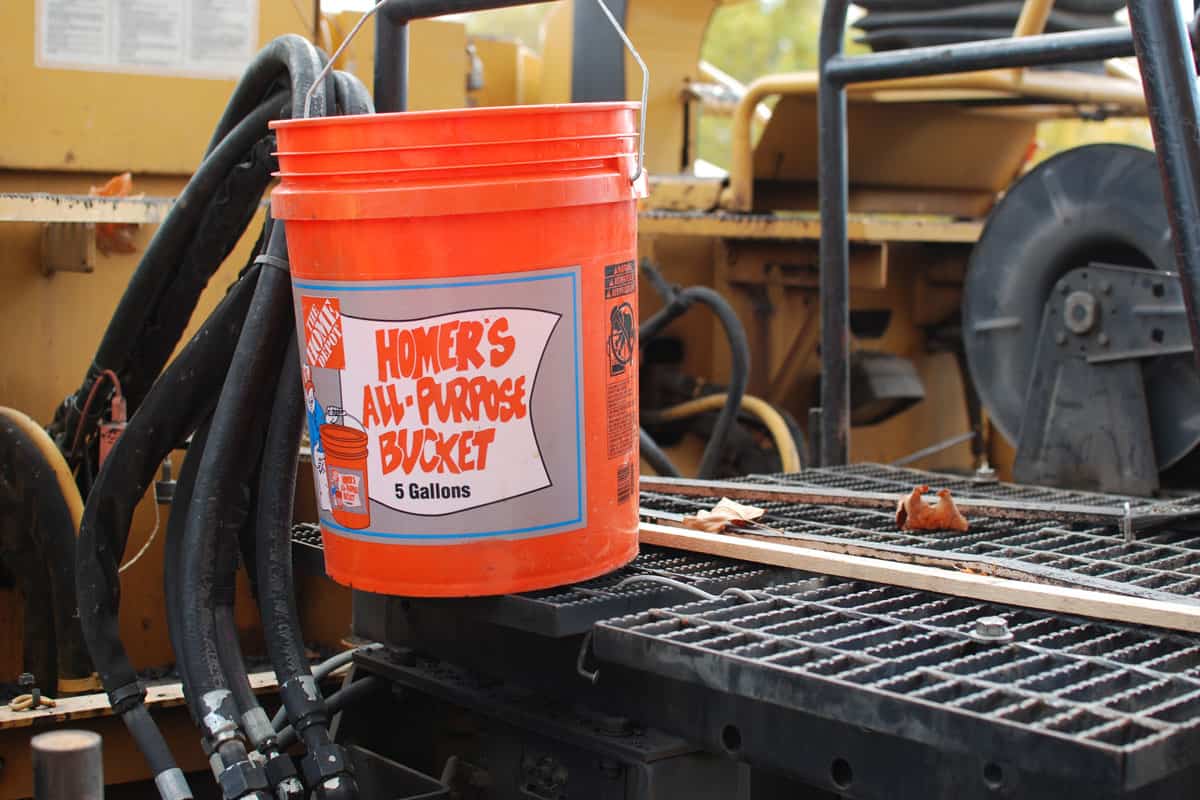
Water, paint, mixed concrete, and other compounds and substances can be accurately measured and transported with a 5-gallon bucket. It provides a standard medium by which you could estimate the amount needed to finish a task or landscaping project.
In Closing

It would take about 45 to 50 loads of a 5-gallon bucket, not filled to capacity, to complete a cubic yard or 27 cubic feet of necessary volume of soil, sand, gravel, and mulch. The actual number may vary slightly depending on how you utilize the available and workable of dimensions your container.
We hope the article proved instrumental as to how you would plan and compute for actual measurements you require.
You might also find these topics helpful:
How Many Wheelbarrows Are In A Yard Of Concrete?
How Much Does A Yard Of Mulch Weigh?

